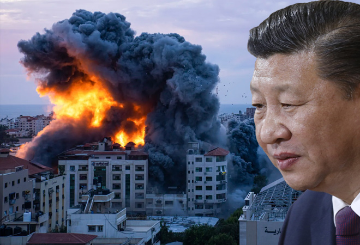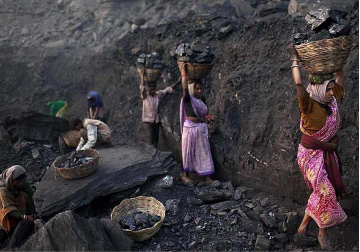
Russia’s invasion of Ukraine has shown the limits of American power and failure of the international system to stop yet another war. Though the present military conflict is mainly internal to Europe’s military security matrix, it will seriously impact geopolitics.
Locked in a boundary dispute with China, India has two critical takeaways from this development. First, Ukraine’s invasion has stripped America of its sole security guarantor status and has exposed its military and diplomatic inability to confront a peer military power. And second, this experience will only embolden Beijing to replicate Moscow’s actions against India. Should the People’s Liberation Army (PLA) translate its violent brawls with the Indian Army into a localised war to capture territories along the Line of Actual Control (LAC), New Delhi can’t expect Washington (or the West) to provide anything more than lip service. On the other hand, Russia will be busy grappling with internal economic issues in the wake of the ‘unprecedented sanctions’ imposed as a result of its invasion of Ukraine. Given this scenario, India will be on its own—diplomatically as well as militarily, against any Chinese military overtures.
Russia will be busy grappling with internal economic issues in the wake of the ‘unprecedented sanctions’ imposed as a result of its invasion of Ukraine.
Clearly, America didn’t want to enter into any conflict with Russia as it is aware of Russia’s growing sphere of influence, and the Pentagon doesn’t have an appetite for another conventional or unconventional war.
Long before Russia’s military action against Ukraine, America had refused to commit troops and supply weapon systems to Kyiv. The other North Atlantic Treaty Organisation (NATO) partners, too, have been shy of any direct military engagement with Russia.
The current crisis presents an opportunity for Beijing. By not calling Russia’s military actions an invasion and abstaining from voting in the United Nations Security Council, China has signalled its tacit support for Moscow. It’s a matter of time before Beijing draws a parallel from American and Russian disregard for a rules-based international order to invade India along the LAC. India, therefore, needs to be more vigilant on its frontiers and proactive on the diplomatic front.
While New Delhi has followed the path of non-alignment, it will have to eventually bite the bullet in the face of contentious geopolitics and the hesitancy of the countries who have the military and diplomatic power to involve themselves.
The current crisis is diplomatically challenging for New Delhi—especially when it is dependent on both the West and Russia in several ways. New Delhi will lose some credibility on either side of the fence, i.e., pro-Russia or pro-West. The danger of losing the West’s support would cost India quality military hardware than what Moscow provides, whereas losing the latter’s support would cost New Delhi one crucial vote in the UNSC. In the immediate future the delivery of the much-awaited S-400 missile systems and other military hardware that could augment India’s defence capabilities will now be delayed.
The possibility of war
The Galwan episode of June 2020 was the PLA’s cunning military move that could have cut the Indian Army’s access to Daulat Beg Oldie and narrowed the
geographical gap between China and Pakistan in the northern border areas. It must be noted that China has been comfortably sitting in the Shaksgam Valley (on the north of Siachen) and Pakistan is on the east of the glacier. India’s one off-the-guard moment could complete the military collusion between Beijing and Islamabad.
The danger of losing the West’s support would cost India quality military hardware than what Moscow provides, whereas losing the latter’s support would cost New Delhi one crucial vote in the UNSC.
Despite several rounds of talks between military commanders from the two sides, the PLA has continued to amass troops and military hardware along the LAC. It indicative of a more exhaustive, but short military campaign China might want to wage in future.
The PLA must be very minutely observing the Russian operations in Ukraine. Once Moscow’s aim is achieved, the troops will be ordered to return to their barracks, but it is nearly two week and they have not been able to prevail militarily and politically over Ukraine. In contrast, China wants Indian territory that it would never return, therefore, it would want a swift operation of not more than two to three days to invade and capture to dominate the latter diplomatic process.
In Ukraine, Russia is fighting a classic conventional war. There are multiple entry/exit points available for the armoured columns, mechanised forces and the infantry units—supported by the Russian Air Force. In contrast, the geography and weather conditions along the LAC are major hurdles. For the vehicle-mounted forces, there are limited entry/exit points, whereas for the infantry—treading through the mountains could prove to be death traps. At the same time, the air force has several restrictions. Here, classic conventional operations would need support of the nature and modern technology.
The PLA is well aware about these realities and, therefore, it would adopt vicious methods. First amongst them is weaponisation of water. Amidst the Galwan crisis in 2020, there were
reports of China controlling the water flow of the Galwan river and Beijing is already constructing
five dams over the Brahmaputra that flows into Arunachal Pradesh. In short, before the PLA launches a conventional operation, weaponisation of water—to flood Indian positions or to run the downstream areas dry or sabotage water by polluting it cannot be ruled out. The question is, can India defend itself from future water wars China might wage? The answer lies in the development of infrastructure that can withstand intentional flooding. From a strategic standpoint, it must also be understood that mobilising various arms of the army has its limitations. Beijing must be engaged diplomatically to share data on the water resources in the region and New Delhi must explore legal options on the issue of China damming the water.
The Indian Army is battle hardened to deal with conventional military offensive to stop the PLA’s advance and can equally penetrate the plains across the LAC and capture dominating heights.
The second onslaught of the PLA could be simultaneous activation of non-kinetic domains such as hybrid, grey-zone and information warfare (comprising of cyber-attacks, electronic warfare, and psychological warfare), to overwhelm India's command, control, communication, computers, intelligence, surveillance and reconnaissance (C4ISR) systems to disorient Indian Army’s perception of the battlefield and restrict its ability to counter-attack, and shut down various government institutions to numb New Delhi’s diplomatic response. For India, such a situation could prove to be a tall challenge.
The Indian Army is battle hardened to deal with conventional military offensive to stop the PLA’s advance and can equally penetrate the plains across the LAC and capture dominating heights. It is also acquiring capabilities to fight in the domain of non-contact warfare, but with China, it would not only be the game of numbers but also about overwhelming use of technology. The Government of India
needs to rapidly build critical military infrastructure and unconventional warfare capabilities that would support every stage of the war.
Recently, the Chief of Army Staff, Gen. MM Naravane, had
expressed his concerns about India already experiencing some of the new challenges. The Vice Chief, Lt Gen. Manoj Pande, also articulated the
“need to build credible deterrence to defeat strategic objectives of India's adversaries.” Their statements are important because while India is theaterising its armed forces, building strategic infrastructure, and developing non-contact warfare capabilities, China has cruised ahead in these aspects. India must fix the gaps in its security matrix at the earliest to respond to the ever-evolving challenges.
The views expressed above belong to the author(s). ORF research and analyses now available on Telegram! Click here to access our curated content — blogs, longforms and interviews.



 Russia’s invasion of Ukraine has shown the limits of American power and failure of the international system to stop yet another war. Though the present military conflict is mainly internal to Europe’s military security matrix, it will seriously impact geopolitics.
Locked in a boundary dispute with China, India has two critical takeaways from this development. First, Ukraine’s invasion has stripped America of its sole security guarantor status and has exposed its military and diplomatic inability to confront a peer military power. And second, this experience will only embolden Beijing to replicate Moscow’s actions against India. Should the People’s Liberation Army (PLA) translate its violent brawls with the Indian Army into a localised war to capture territories along the Line of Actual Control (LAC), New Delhi can’t expect Washington (or the West) to provide anything more than lip service. On the other hand, Russia will be busy grappling with internal economic issues in the wake of the ‘unprecedented sanctions’ imposed as a result of its invasion of Ukraine. Given this scenario, India will be on its own—diplomatically as well as militarily, against any Chinese military overtures.
Russia’s invasion of Ukraine has shown the limits of American power and failure of the international system to stop yet another war. Though the present military conflict is mainly internal to Europe’s military security matrix, it will seriously impact geopolitics.
Locked in a boundary dispute with China, India has two critical takeaways from this development. First, Ukraine’s invasion has stripped America of its sole security guarantor status and has exposed its military and diplomatic inability to confront a peer military power. And second, this experience will only embolden Beijing to replicate Moscow’s actions against India. Should the People’s Liberation Army (PLA) translate its violent brawls with the Indian Army into a localised war to capture territories along the Line of Actual Control (LAC), New Delhi can’t expect Washington (or the West) to provide anything more than lip service. On the other hand, Russia will be busy grappling with internal economic issues in the wake of the ‘unprecedented sanctions’ imposed as a result of its invasion of Ukraine. Given this scenario, India will be on its own—diplomatically as well as militarily, against any Chinese military overtures.
 PREV
PREV


